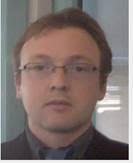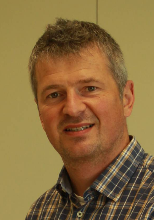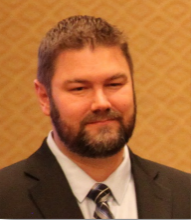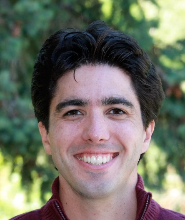| Considerations for Simulating Fluidized Beds |
Ray Cocco, Ph.D.
PSRI |
PDF Download |
|
 Fluidized beds are commonly used for the manufacturing of a wide range of products including syngas, fuels including gasoline, acrylonitrile, polyolefins, and ultra-high purity silicon. These units provide unsurpassed heat transfer along with the ability to flow solids during operation. Yet, scale-up of these units can be challenging with respect to productivity and reliability. Fortunately, CFD has made significant in-roads to provide additional tools for this scale-up. However, there are pitfalls to be aware of to produce a successful and useful model which will be discussed. Fluidized beds are commonly used for the manufacturing of a wide range of products including syngas, fuels including gasoline, acrylonitrile, polyolefins, and ultra-high purity silicon. These units provide unsurpassed heat transfer along with the ability to flow solids during operation. Yet, scale-up of these units can be challenging with respect to productivity and reliability. Fortunately, CFD has made significant in-roads to provide additional tools for this scale-up. However, there are pitfalls to be aware of to produce a successful and useful model which will be discussed.
|
|
| Simulation of an FCC Regenerator with Coke Combustion |
Benjamin Amblard
IFP Energies nouvelles |
PDF Download |
|
 In this work, Barracuda® was used to model both hydrodynamics and coke combustion kinetic in a FCC regenerator. Barracuda CFD software was coupled with proprietary coke combustion kinetic equations and rate constants, developed experimentally at IFP Energyies Nouvelles (IFPEN). This study provides an example of how the CFD based kinetic tool is used in the modeling of an industrial FCC regenerator. The results provide detailed qualitative mapping of the regenerator behavior in terms of flue gas composition, temperature distribution including afterburning, and regenerator bed density in both axial and radial planes. In this work, Barracuda® was used to model both hydrodynamics and coke combustion kinetic in a FCC regenerator. Barracuda CFD software was coupled with proprietary coke combustion kinetic equations and rate constants, developed experimentally at IFP Energyies Nouvelles (IFPEN). This study provides an example of how the CFD based kinetic tool is used in the modeling of an industrial FCC regenerator. The results provide detailed qualitative mapping of the regenerator behavior in terms of flue gas composition, temperature distribution including afterburning, and regenerator bed density in both axial and radial planes.
|
|
|
|
| Barracuda Simulation of a CFBC Test Rig: Comparison With Experimental Results |
Sebastian Krusch
Ruhr-University Bochum, Germany |
PDF Download |
|
 The study presents profile measurements of gas emissions, temperature and pressure in a circulating fluidized bed combustor (CFBC) test rig firing two different bituminous coals (German Auguste Viktoria (AV) and US High Sulfur). The results of the AV coal are compared with 3D simulations of the test rig using the commercial code CPFD Barracuda. The particle phase description is based on the Multiphase Particle-in-Cell (MP-PIC) method. The study presents profile measurements of gas emissions, temperature and pressure in a circulating fluidized bed combustor (CFBC) test rig firing two different bituminous coals (German Auguste Viktoria (AV) and US High Sulfur). The results of the AV coal are compared with 3D simulations of the test rig using the commercial code CPFD Barracuda. The particle phase description is based on the Multiphase Particle-in-Cell (MP-PIC) method.
The simulation of the combustion process of the coal is based on global kinetic approaches from literature, which comprise drying, pyrolysis, homogenous combustion of pyrolysis products and heterogeneous conversion of char. Pyrolysis kinetics has been derived from the CPD model. The char burn-out model accounts for char reactions with O2, CO2 and H2O.
The trends of the pressure profiles along the riser height are well represented by the simulations. However, the study shows the limitations of literature kinetic data in order to represent measured emission data. Whereas, majority species like O2 and CO2 are well reproduced by the simulations, CO shows still significant differences.
|
|
| Unconventional Barracuda Applications: An Overview |
Federico Monterosso
OMIQ srl |
PDF Download |
|
 Barracuda Virtual Reactor is well renowned as a software tool dedicated to fluidised beds problems. We found out, however, that it can be used very efficiently for other fluid dynamics applications, like filters, ovens, mixers, and valves. What follows is an overview of cases that we worked on and that we validated in the past two years for various industry sectors. Barracuda Virtual Reactor is well renowned as a software tool dedicated to fluidised beds problems. We found out, however, that it can be used very efficiently for other fluid dynamics applications, like filters, ovens, mixers, and valves. What follows is an overview of cases that we worked on and that we validated in the past two years for various industry sectors.
|
|
|
| CPFD Simulation of Refuse Derived Fuel (RDF)-Fired Calciner |
Mohammadhadi Nakhaei
Technical University of Denmark |
PDF Download |
|
 In this presentation, the simulation results of a calciner operating with 100% RDF are discussed. Also the challenges/limitations in defining the inputs to the solver, e.g. radiation heat transfer to large particles and aerodynamics of non-spherical particles, are addressed. In this presentation, the simulation results of a calciner operating with 100% RDF are discussed. Also the challenges/limitations in defining the inputs to the solver, e.g. radiation heat transfer to large particles and aerodynamics of non-spherical particles, are addressed.
|
|
| Barracuda Industrial Applications from a Consultancy Business Point of View |
Martin Weng
aixprocess GmbH |
PDF Download |
|
 The talk gives an overview about typical Barracuda applications from different technology fields from a consultancy point of view. Such typical mid-size projects are characterized by strict requirements in terms of project time and budget, hence an appropriate software tool must be capable of providing fast model set-up, short computation times, reliable and easy-to-analyze results. The talk gives an overview about typical Barracuda applications from different technology fields from a consultancy point of view. Such typical mid-size projects are characterized by strict requirements in terms of project time and budget, hence an appropriate software tool must be capable of providing fast model set-up, short computation times, reliable and easy-to-analyze results.
|
|
| FCC Regenerator Emissions Case Study: A Team Approach to Using Simulation Well |
Peter Blaser
CPFD, LLC |
PDF Download |
|
 A case study is presented for an FCC regenerator experiencing severe maldistribution resulting in high afterburn, intermittent catalyst losses, and excessive CO and NOx emissions. A team was assembled to evaluate operational and simulation data to evaluate potential regenerator modifications prior to unit shutdown. The decision process and final solution is presented, which resulted in significant emissions reductions and elimination of the intermittent catalyst loss phenomenon. A case study is presented for an FCC regenerator experiencing severe maldistribution resulting in high afterburn, intermittent catalyst losses, and excessive CO and NOx emissions. A team was assembled to evaluate operational and simulation data to evaluate potential regenerator modifications prior to unit shutdown. The decision process and final solution is presented, which resulted in significant emissions reductions and elimination of the intermittent catalyst loss phenomenon.
This talk generally follows the presentation given at the 2017 European Refining Technology Conference (ERTC) in Athens, Greece with added emphasis on how to use simulation effectively. Considerations for how to balance simulation unknowns with pragmatic considerations are discussed.
|
|
| Recent Releases & Development |
James Parker, Ph.D.
CPFD, LLC |
PDF Download |
|
 This talk will discuss recent and current development of Barracuda Virtual Reactor. The major features of Barracuda Virtual Reactor versions 17.1 and 17.2 will be highlighted followed by a live demonstration of the recently released version 17.3. This talk will discuss recent and current development of Barracuda Virtual Reactor. The major features of Barracuda Virtual Reactor versions 17.1 and 17.2 will be highlighted followed by a live demonstration of the recently released version 17.3.
|
|
| Advanced Training: Post processing |
Rosemary Clark
CPFD, LLC |
PDF Download |
|
 This presentation demonstrates several post-processing topics which are frequently implemented for CPFD presentations of Barracuda Virtual Reactor results. Post-processing techniques discussed will include cutplanes, colormaps, isovolumes, particle select, animations, and how to plot gas uniformity. This presentation demonstrates several post-processing topics which are frequently implemented for CPFD presentations of Barracuda Virtual Reactor results. Post-processing techniques discussed will include cutplanes, colormaps, isovolumes, particle select, animations, and how to plot gas uniformity.
|
|
| Advanced Training: Drag Calibration |
Sam Clark
CPFD, LLC |
PDF Download |
|
 This presentation discusses drag model calibration in the context of Barracuda Virtual Reactor simulations of a large-scale cold-flow experiment performed by PSRI. Drag is an important empirical model in Barracuda, and calibration based on available experimental data can improve the predictive capability of simulation efforts. In this example, the Wen-Yu/Ergun blend drag model was used. The linear coefficient of the Ergun portion was calibrated based on minimum fluidization data, and a multiplier applied to the Wen-Yu portion was calibrated based on pressure profile data from a single operating condition of the large-scale cold-flow experiment. This presentation discusses drag model calibration in the context of Barracuda Virtual Reactor simulations of a large-scale cold-flow experiment performed by PSRI. Drag is an important empirical model in Barracuda, and calibration based on available experimental data can improve the predictive capability of simulation efforts. In this example, the Wen-Yu/Ergun blend drag model was used. The linear coefficient of the Ergun portion was calibrated based on minimum fluidization data, and a multiplier applied to the Wen-Yu portion was calibrated based on pressure profile data from a single operating condition of the large-scale cold-flow experiment.
|
|


 Fluidized beds are commonly used for the manufacturing of a wide range of products including syngas, fuels including gasoline, acrylonitrile, polyolefins, and ultra-high purity silicon. These units provide unsurpassed heat transfer along with the ability to flow solids during operation. Yet, scale-up of these units can be challenging with respect to productivity and reliability. Fortunately, CFD has made significant in-roads to provide additional tools for this scale-up. However, there are pitfalls to be aware of to produce a successful and useful model which will be discussed.
Fluidized beds are commonly used for the manufacturing of a wide range of products including syngas, fuels including gasoline, acrylonitrile, polyolefins, and ultra-high purity silicon. These units provide unsurpassed heat transfer along with the ability to flow solids during operation. Yet, scale-up of these units can be challenging with respect to productivity and reliability. Fortunately, CFD has made significant in-roads to provide additional tools for this scale-up. However, there are pitfalls to be aware of to produce a successful and useful model which will be discussed. In this work, Barracuda® was used to model both hydrodynamics and coke combustion kinetic in a FCC regenerator. Barracuda CFD software was coupled with proprietary coke combustion kinetic equations and rate constants, developed experimentally at IFP Energyies Nouvelles (IFPEN). This study provides an example of how the CFD based kinetic tool is used in the modeling of an industrial FCC regenerator. The results provide detailed qualitative mapping of the regenerator behavior in terms of flue gas composition, temperature distribution including afterburning, and regenerator bed density in both axial and radial planes.
In this work, Barracuda® was used to model both hydrodynamics and coke combustion kinetic in a FCC regenerator. Barracuda CFD software was coupled with proprietary coke combustion kinetic equations and rate constants, developed experimentally at IFP Energyies Nouvelles (IFPEN). This study provides an example of how the CFD based kinetic tool is used in the modeling of an industrial FCC regenerator. The results provide detailed qualitative mapping of the regenerator behavior in terms of flue gas composition, temperature distribution including afterburning, and regenerator bed density in both axial and radial planes. The study presents profile measurements of gas emissions, temperature and pressure in a circulating fluidized bed combustor (CFBC) test rig firing two different bituminous coals (German Auguste Viktoria (AV) and US High Sulfur). The results of the AV coal are compared with 3D simulations of the test rig using the commercial code CPFD Barracuda. The particle phase description is based on the Multiphase Particle-in-Cell (MP-PIC) method.
The study presents profile measurements of gas emissions, temperature and pressure in a circulating fluidized bed combustor (CFBC) test rig firing two different bituminous coals (German Auguste Viktoria (AV) and US High Sulfur). The results of the AV coal are compared with 3D simulations of the test rig using the commercial code CPFD Barracuda. The particle phase description is based on the Multiphase Particle-in-Cell (MP-PIC) method. Barracuda Virtual Reactor is well renowned as a software tool dedicated to fluidised beds problems. We found out, however, that it can be used very efficiently for other fluid dynamics applications, like filters, ovens, mixers, and valves. What follows is an overview of cases that we worked on and that we validated in the past two years for various industry sectors.
Barracuda Virtual Reactor is well renowned as a software tool dedicated to fluidised beds problems. We found out, however, that it can be used very efficiently for other fluid dynamics applications, like filters, ovens, mixers, and valves. What follows is an overview of cases that we worked on and that we validated in the past two years for various industry sectors. In this presentation, the simulation results of a calciner operating with 100% RDF are discussed. Also the challenges/limitations in defining the inputs to the solver, e.g. radiation heat transfer to large particles and aerodynamics of non-spherical particles, are addressed.
In this presentation, the simulation results of a calciner operating with 100% RDF are discussed. Also the challenges/limitations in defining the inputs to the solver, e.g. radiation heat transfer to large particles and aerodynamics of non-spherical particles, are addressed. The talk gives an overview about typical Barracuda applications from different technology fields from a consultancy point of view. Such typical mid-size projects are characterized by strict requirements in terms of project time and budget, hence an appropriate software tool must be capable of providing fast model set-up, short computation times, reliable and easy-to-analyze results.
The talk gives an overview about typical Barracuda applications from different technology fields from a consultancy point of view. Such typical mid-size projects are characterized by strict requirements in terms of project time and budget, hence an appropriate software tool must be capable of providing fast model set-up, short computation times, reliable and easy-to-analyze results. A case study is presented for an FCC regenerator experiencing severe maldistribution resulting in high afterburn, intermittent catalyst losses, and excessive CO and NOx emissions. A team was assembled to evaluate operational and simulation data to evaluate potential regenerator modifications prior to unit shutdown. The decision process and final solution is presented, which resulted in significant emissions reductions and elimination of the intermittent catalyst loss phenomenon.
A case study is presented for an FCC regenerator experiencing severe maldistribution resulting in high afterburn, intermittent catalyst losses, and excessive CO and NOx emissions. A team was assembled to evaluate operational and simulation data to evaluate potential regenerator modifications prior to unit shutdown. The decision process and final solution is presented, which resulted in significant emissions reductions and elimination of the intermittent catalyst loss phenomenon. This talk will discuss recent and current development of Barracuda Virtual Reactor. The major features of Barracuda Virtual Reactor versions 17.1 and 17.2 will be highlighted followed by a live demonstration of the recently released version 17.3.
This talk will discuss recent and current development of Barracuda Virtual Reactor. The major features of Barracuda Virtual Reactor versions 17.1 and 17.2 will be highlighted followed by a live demonstration of the recently released version 17.3. This presentation demonstrates several post-processing topics which are frequently implemented for CPFD presentations of Barracuda Virtual Reactor results. Post-processing techniques discussed will include cutplanes, colormaps, isovolumes, particle select, animations, and how to plot gas uniformity.
This presentation demonstrates several post-processing topics which are frequently implemented for CPFD presentations of Barracuda Virtual Reactor results. Post-processing techniques discussed will include cutplanes, colormaps, isovolumes, particle select, animations, and how to plot gas uniformity. This presentation discusses drag model calibration in the context of Barracuda Virtual Reactor simulations of a large-scale cold-flow experiment performed by PSRI. Drag is an important empirical model in Barracuda, and calibration based on available experimental data can improve the predictive capability of simulation efforts. In this example, the Wen-Yu/Ergun blend drag model was used. The linear coefficient of the Ergun portion was calibrated based on minimum fluidization data, and a multiplier applied to the Wen-Yu portion was calibrated based on pressure profile data from a single operating condition of the large-scale cold-flow experiment.
This presentation discusses drag model calibration in the context of Barracuda Virtual Reactor simulations of a large-scale cold-flow experiment performed by PSRI. Drag is an important empirical model in Barracuda, and calibration based on available experimental data can improve the predictive capability of simulation efforts. In this example, the Wen-Yu/Ergun blend drag model was used. The linear coefficient of the Ergun portion was calibrated based on minimum fluidization data, and a multiplier applied to the Wen-Yu portion was calibrated based on pressure profile data from a single operating condition of the large-scale cold-flow experiment.